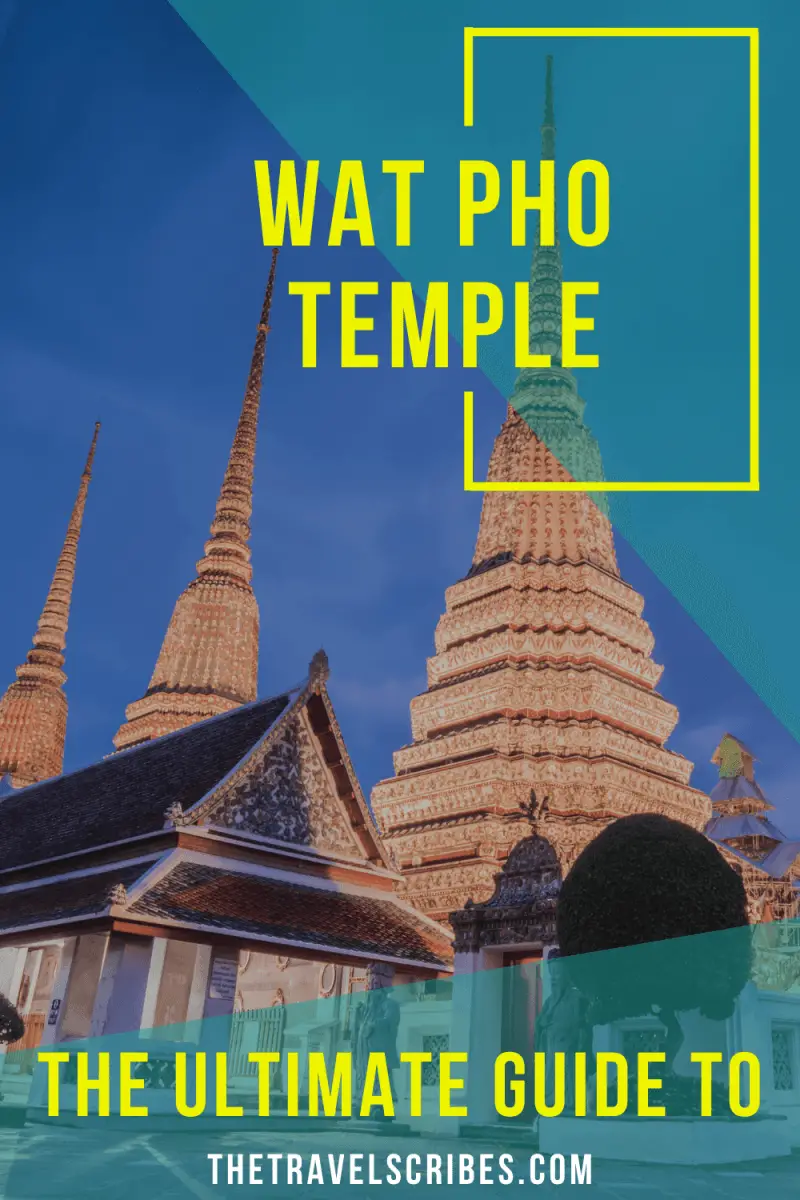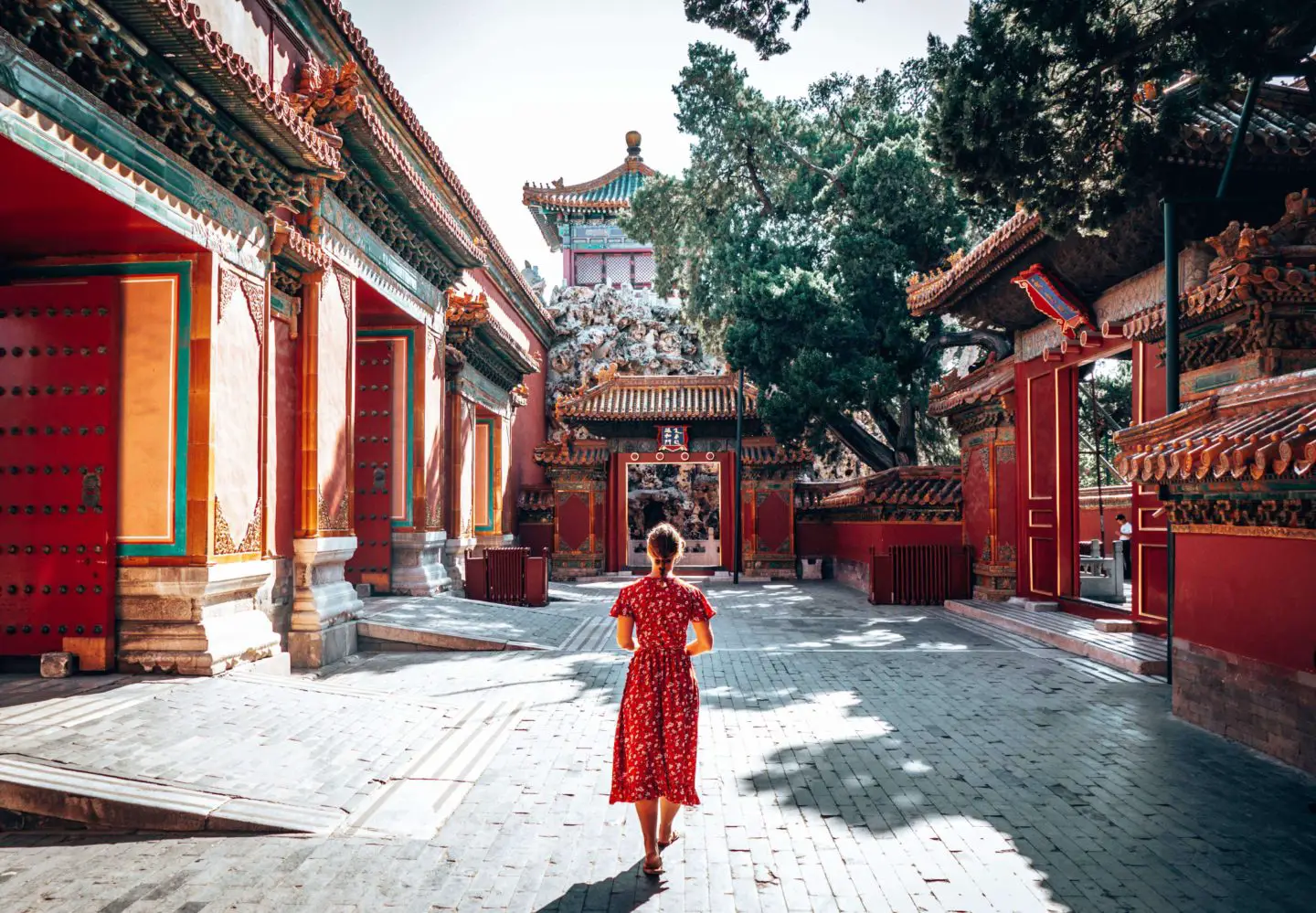Golden spires pierce into the sky, standing out against a bright blue sky and glistening against an inky blue canvas as the sun goes down. This is the Wat Pho temple, one of the oldest and biggest temples in Bangkok and home of the Reclining Buddha. Also known as the Wat Phra Chetuphon Wimon Mangkhalaram Rajwaramahawihan (a mouthful, we know!), Wat Pho holds the status of a first-class royal temple.
Built in the 17th century and measuring 80,000 square meters, the Wat Pho is impressive on several counts. This famous Thai landmark houses more than 1000 Buddha images and the single largest Buddha statue in all of Thailand. And did we mention, the home of the Reclining Buddha?
The complex not only holds buildings of religious significance but of educational importance too. The Wat Pho is considered to be the first public university in Thailand. In 1955, a school for traditional Thai medicine and massage was set up within these walls, and to date, the Wat Pho remains one of the best places to experience a Thai massage.
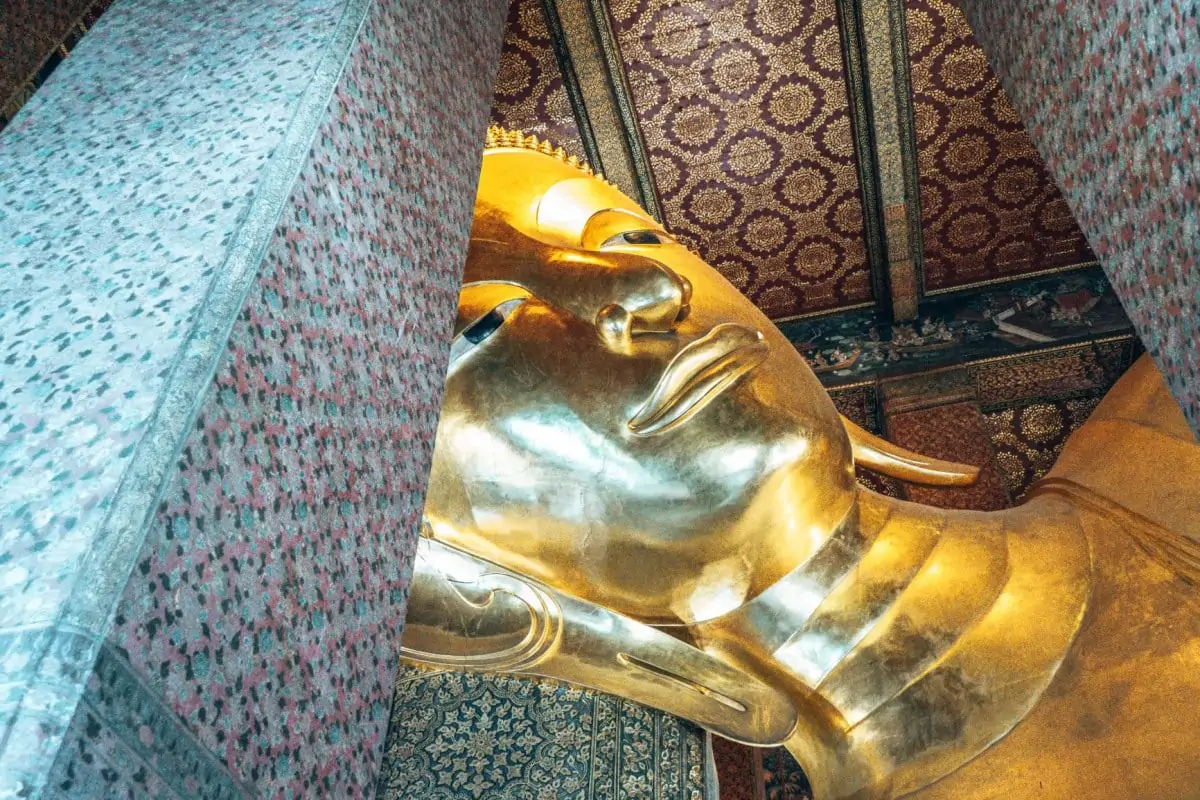
Skip ahead
History of Wat Pho
The history of the Wat Pho can be traced back to the late 17th century though the exact date of construction is not known. In fact, the Wat Pho was built even before Bangkok was declared the capital of Thailand.
The Wat Pho is believed to have been built by King Phetracha, but it was not until King Rama (late 1700s), who built the Grand Palace adjacent to the temple, that it gained importance.
During the reign of King Rama III from 1824 to 1851, more renovations took place, and the temple complex was made into what it is today. It was during this period that the temple was established as a centre for learning and education.
Main attractions of the Wat Pho
There is quite a lot to explore at this beautiful temple but, to get you started, here is a list of the spots and sights you shouldn’t miss.
Phra Ubosot or Ordination hall – This is considered the most important building of the complex. Inside, the Phra Buddha Theva Patimakorn, the largest golden statue of the Buddha, sits on a three-tiered pedestal made of gold and crystal. With the entire hall done up in gold tones, the whole space emits an ethereal golden glow. Quite otherworldly!
The Phra Ubosot lies in the centre of the Phra Rabiang.
Phra Rabiang – Of 1000 + Buddha statues that are in the Wat Pho, you will find about 400 in the Phra Rabiang, the complex surrounding the Phra Ubosot. Take a walk along the inner and outer cloister to view the rows of sitting and standing Buddhas that can be traced back to the latter part of the 18th century. You will also find four viharn or temples, one on each side of the Phra Rabiang, dedicated to a different Buddha form.
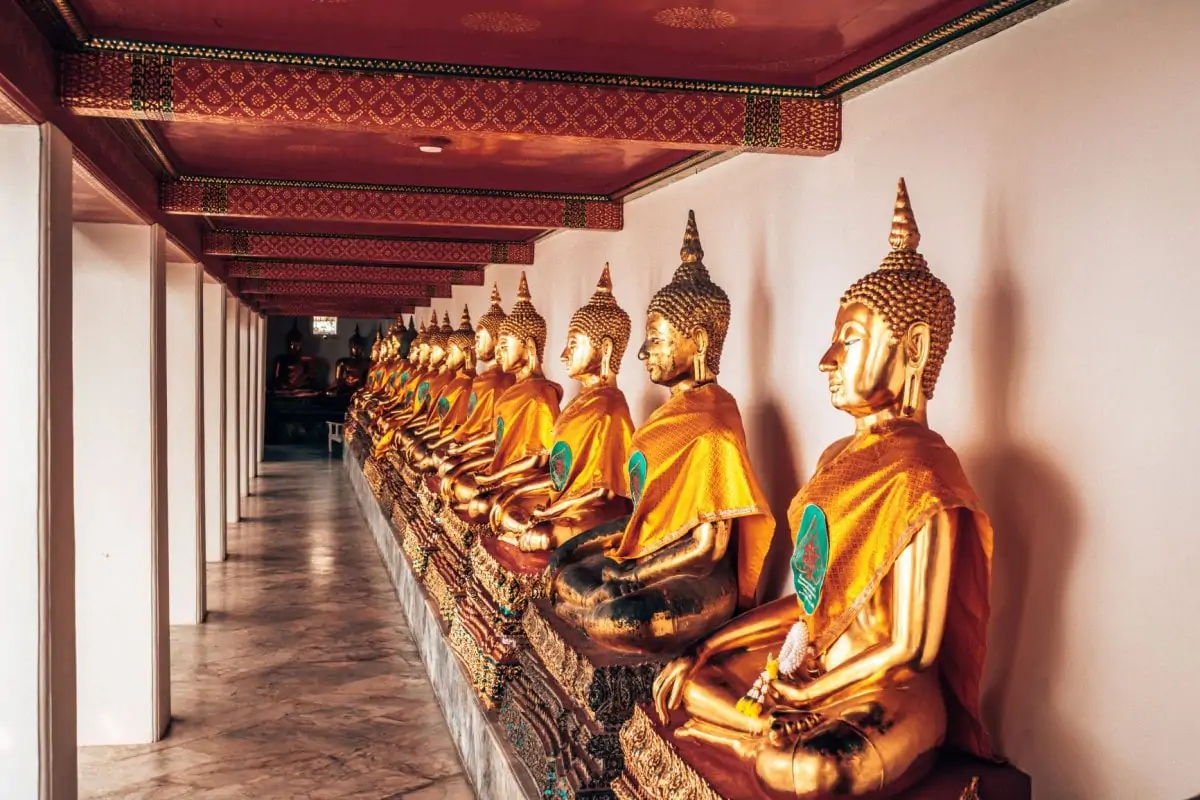
Phra Maha Stupa – are four marble stupas decorated with Khmer-style statues done in gold. They are also known as the Phra Prang and are located in the courtyard outside the main hall.
The Reclining Buddha – But, of course! It’s the single reason thousands of devotees and visitors throng to the Wat Pho every year and the reason why this temple is one of our favorites. No matter how much you have read or seen images and videos of the statue, nothing prepares you for the grandeur of the Reclining Buddha.
Measuring 15 m tall and 46 m long (that’s 150 feet x 50 feet!), the sheer scale of the statue leaves you speechless. It certainly left us in a state of awe! With head resting on his hand, the Reclining Buddha lies on his right side, representing Nirvana, the ultimate goal. In Buddhism, Nirvana refers to a cessation of greed, ignorance and aversion, and freedom from the cycle of rebirth.
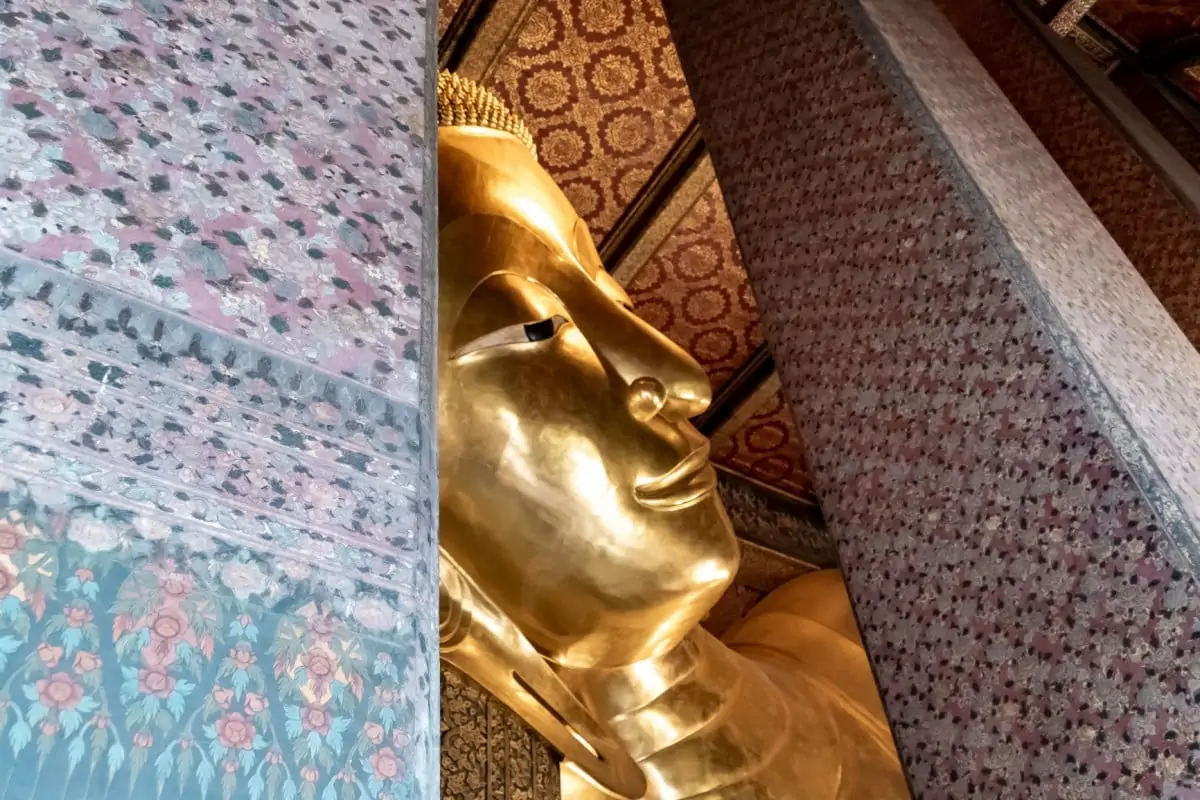
Interesting fact: There are around 100 different types of Buddha poses, each one representing a different meaning. Walk around the Wat Pho and see if you can spot the various mudras or gestures of Buddha.
The Reclining Buddha is located in the Viharn Phranorn. Next to this building is a garden with a bodhi tree, said to have propagated from the Jaya Shri Maha Bodhi tree, which is believed to have come from the original Bodhi tree under which the Buddha attained enlightenment.
The Buddha’s Feet – While the Reclining Buddha is gilded in gold, the feet feature 108 mother- -of-pearl panels, each depicting an auspicious symbol from Buddhism. The feet alone measure 3 m tall and 4.5 m wide (10 feet by 15 feet)! The chakra at the centre of each foot represents the energy point.
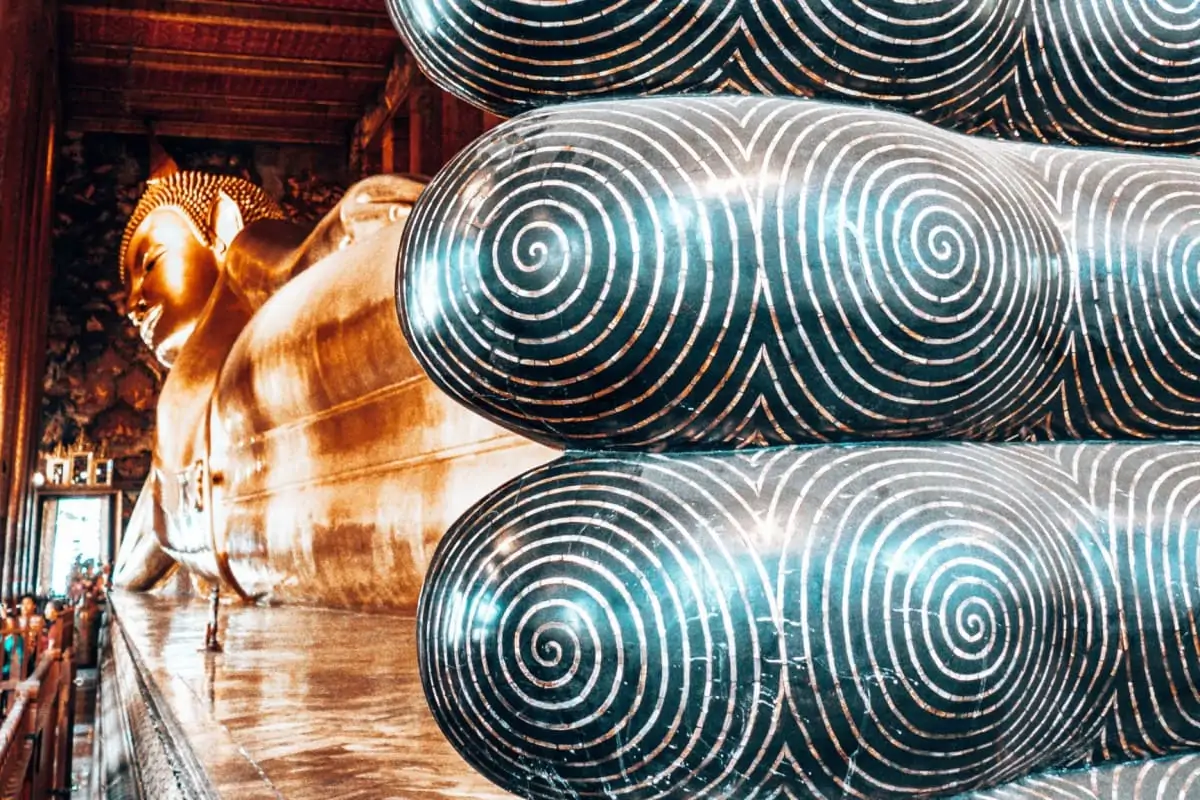
108 Bowls – Follow the clinking of coins to get to the 108 bronze bowls, placed in a line and said to represent the 108 auspicious characters of the Buddha. Dropping coins into these bowls is believed to bring good luck.
You can pick up coins to drop into the bowls at the temple entrance. These donations help the monks maintain the temple.
Another interesting fact: The number 108 is a recurring theme in Buddhism, Hinduism, and Yoga and has great significance in these cultures and practices. According to Buddhism, there are 108 feelings and 108 earthly desires. You are likely to see many references to this number when traveling through Thailand, especially in its temples and spiritual centres.
Phra Maha Chedi Si Rajakarn – is a set of four stupas, measuring about 42 m high, representing the reign of the first four Chakri kings. They are beautifully decorated with glazed tiles that reflect light to create interesting patterns.
Khao Mor – is a charming rock garden set around the Phra Rabiang. It features trees, dwarfed plants, and hermit statues depicting various Yoga poses.
Murals and inscriptions – The Wat Pho is considered the first public university in Thailand. You will find paintings and illustrations based on science, medicine, Buddhism, Buddha images and many other subjects in almost every corner of the Wat Pho complex.
The Wat Pho Massage Pavilion – The Wat Pho is believed to be one of the earliest and premier massage schools in Thailand. Do note that traditional Thai massages are given entirely clothed and in a communal setting. If you are traveling during peak tourist season, then we suggest you pre-book a time to avoid a long wait. We also recommend you wear loose clothing.
You can get a full-body or foot massage for 30 mins or an hour. We opted for an hour-long foot massage and highly recommend it. It was a good break and the perfect thing to do after walking for close to three hours.
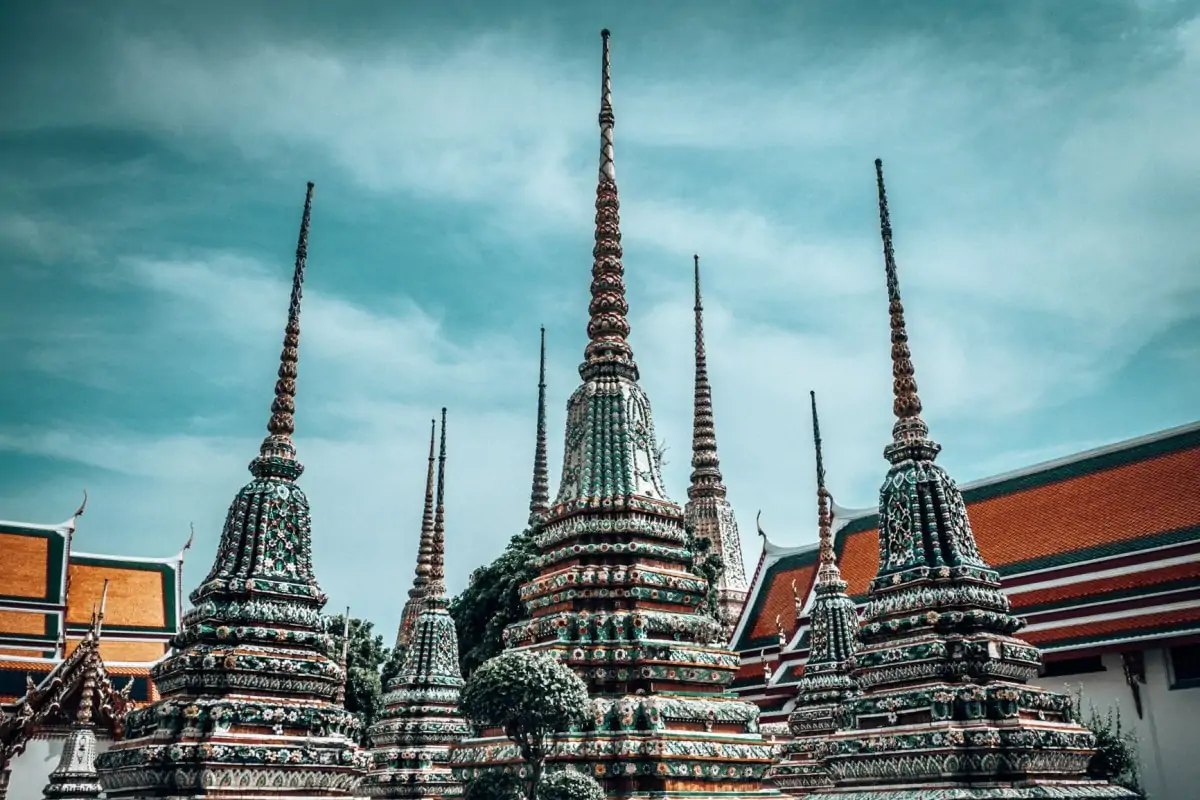
How to get to Wat Pho
The Wat Pho is located on the Eastern bank of the Chao Phraya River and is 5 min walk from the Tha Tien boat pier. So depending on your day’s plan, you could take the Chao Praya riverboat either while getting to or leaving from the Wat Pho.
You could also take a taxi or tuk-tuk if you are not close to the river. Tuk-tuks are a convenient way of navigating through the sometimes-maddening Bangkok traffic.
If you want to try out Thailand’s public transportation system, you could take a local Bangkok bus or even travel by the MRT subway. The nearest station is the Sanam Chai station, which is just an 8-minute walk to the temple.
Wat Pho Location: Bang Ramat, Taling Chan, Bangkok 10170, Thailand
What to wear at Wat Pho
Modesty is key while visiting the Wat Pho and other temples of Thailand. Wear clothes that cover your shoulders and knees. So half or full sleeve T-shirts or shirts and trousers or skirts that fall below the knee are a must.
When to visit Wat Pho
The Wat Pho is open all days from 8 am to 6.30 pm and, as with all temples, the earlier you go the better. The Wat Pho entrance fee for foreigners is 200 Baht (4.50 GBP / 6.60 USD). Kids under 120 cms are free.
Attractions near to Wat Pho
Want to tag a few more attractions onto your Wat Pho visit? The Grand Palace is less than 10 mins away by walk from the Wat Pho. The Wat Phra Kaew, the Temple of the Emerald Buddha, lies on the other side of the Grand Palace and is a 5-10 min walk.
The Wat Arun, popularly known as the Temple of Dawn, lies on the other side of the Chao Phraya River and is a really short (and fun!) ferry ride away.
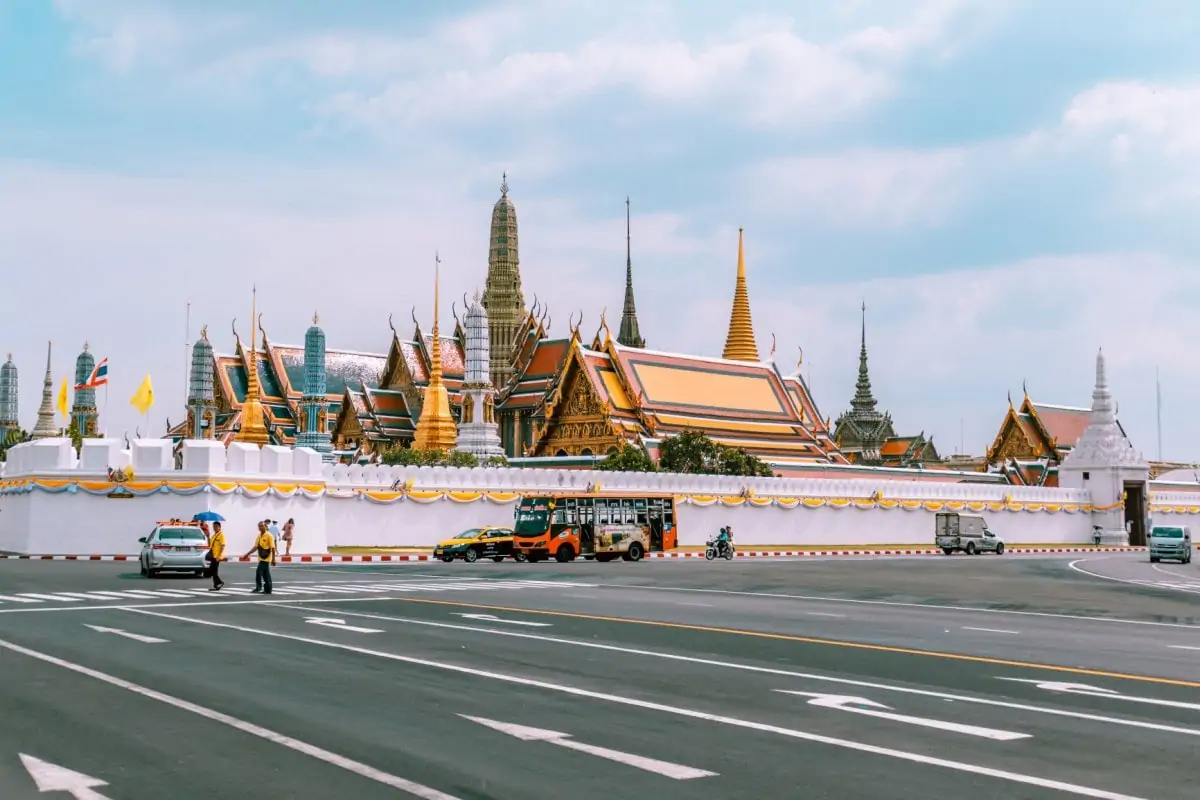
Where to stay in Bangkok
If you’re visiting Wat Pho, we guess you’ll need somewhere to lay your head that evening. Bangkok, as the capital city of Thailand, is awash with great options – from budget backpacker hostels to first-class, fabulous hotels.
Luxury: If you really want to splurge, we’d punt for Banyan Tree , a gorgeous chain of boutique hotels. This particular Banyan Tree has a lovely spa, and an acclaimed restaurant.
Mid-range: It’s not necessarily a mid-range hotel but the Printing House Poshtel is the perfect option if you want to save on price, but still have comfort. This is an old favourite of ours, and a ‘poshpacker’ so well-appointed, comfy rooms but a wonderful social vibe.
Budget: Honestly, Bangkok has heaps of backpacker joints to choose from. Top of the pops is usually Diff Hostel, which has first-rate amenities and a social atmosphere too.
Other things to do in Bangkok
Let’s be honest – Bangkok is one of the busiest and most cosmopolitan cities in Thailand (if not Asia) – and you’ll always have heaps to do. For the full rundown, read our Bangkok itinerary but, if you just want the highlights, we’d recommend:
Temple-hopping
We’ve mentioned Wat Arun above, but what about checking out Wat Phra Kaew, Wat Traimit (home of the world’s largest seated Buddha!) and our favourite, the Golden Mount Temple aka Wat Saket.
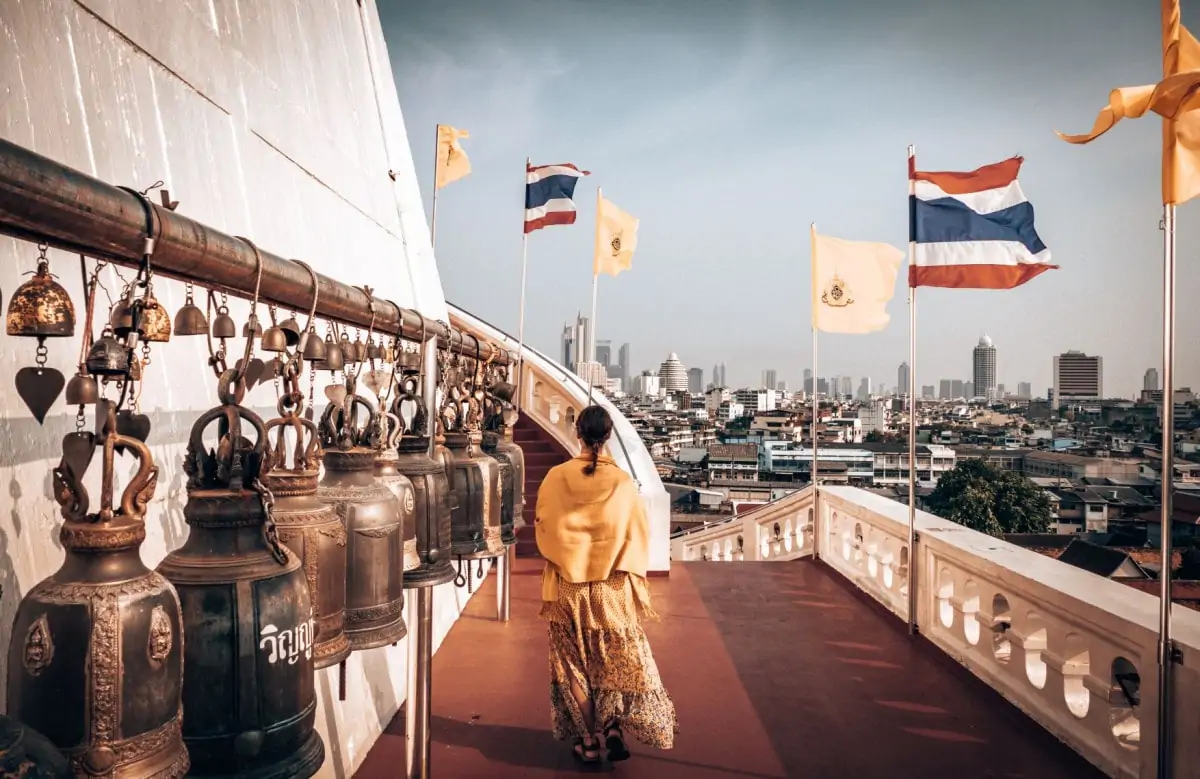
Check out Khao San Road
It’s busy, it’s bolshy but it’s a must-do for any self-respecting backpacker or traveller. You have to head to Khao San Road to be accosted by people selling laughing gas, spiders and cheap suits (in that order!), see Thai nightlife at some of it’s not so finest, or just kick back with a Chang beer and watch the tourists roll on by…
Head to the markets
Bangkok is foodie paradise, and the many food and crafts markets are the best places to stock up on street food in a more sanitised way. If you’re in Bangkok on a weekend, head to the famous Chatuchak market. And, while you’re there, please don’t miss our favourite market and one of the hidden gems of Thailand: Or Tor Kor market.
Visit a floating market
While we’re on the subject of markets, many visitors to Bangkok want to peruse the wares at a floating market. Personally, we find them a little touristy. But if you’re keen to see one in action, the flagship is the Damnoen Saduak floating market; so famous that it’s been featured in films like James Bond in The Man with the Golden Gun!
Get a ticket to see the Damnoen Saduak market here.
Hit the sky bars
Made famous in films like The Hangover II, Bangkok has many a rooftop bar that is perfect for watching the twinkling cityscape before you. Plus they’re ideal to visit after a day of pounding the pavements and temple-hopping, and the heat of visiting places like Wat Pho. The most famous of them all is the Lebua Sky Bar although be warned – the drinks are incredibly expensive!
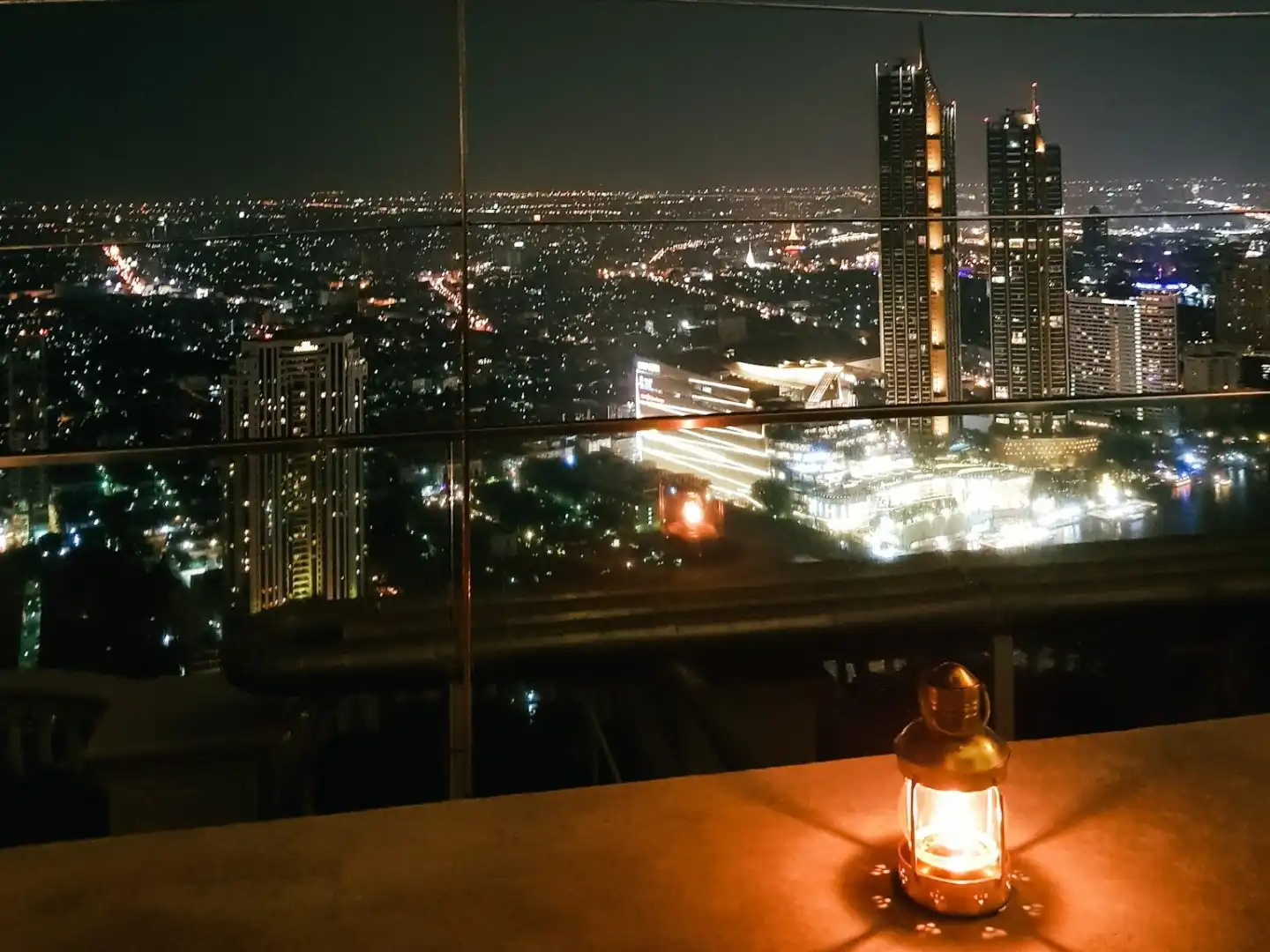
Wat Pho FAQ
What is Wat Pho?
Built in the 17th century and measuring 80,000 square metres, Wat Pho, commonly known as the Temple of the Reclining Buddha, is a Buddhist complex of temples in Bangkok Thailand. The temple is most famous for its Reclining Buddha and also houses the single largest Buddha statue in all of Thailand.
What time does Wat Pho open?
Wat Pho opens each day at 8am and closes at around 6:30pm each day.
What should I wear to Wat Pho?
It’s important to dress modestly when visiting all temples in Thailand, including Wat Pho. Make sure your shoulders and knees are covered.
About the Author: Gayathri Ranganathan
Gayathri is an accomplished travel writer, who loves to travel with her family – her teenage girls and her husband. She feels that ‘traveling is the best way to open up one’s mind and heart to different cultures, foods, and lifestyles.’ When she’s not traveling, she’s dreaming about traveling or busy researching some new destination. “Over the years, I’ve discovered that in life and travel, it’s always about the journey, never about the destination.”
Want to save this for later? Why not pin it…
